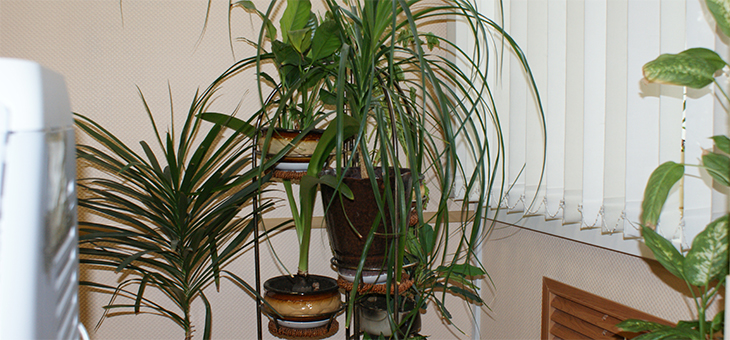A project led by the American National Aeronautics and Space Administration (NASA) to research ways to clean the air in space stations was the first to discover that certain common indoor plants can provide a natural way of removing toxic agents such as benzene, formaldehyde and trichloroethylene from the air.
The study further suggested that efficient air cleaning is accomplished with at least one plant per 9.3m2 of space.
A different study in 2004 has also shown that the micro-organisms in the soil of a potted plant remove benzene from the air, and that some plant species themselves also contribute to removing benzene.
Here are some of the house plants that best filter toxins from the air.
Butterfly palm
According to the NASA clean air study, the butterfly palm filters xylene and toluene from the air. At 1.8 metres in height, the plant will transpire one litre of water per 24 hours, which also makes it an effective humidifier.
Boston fern
Sometimes known as a sword fern, the Boston fern can reach as high as 90cm and is often grown in hanging baskets. The fern thrives in humid conditions, so it becomes necessary to mist the plant when relative humidity drops under 80 per cent. It effectively filters formaldehyde, xylene and toluene from the air and is safe for pets as it is non-toxic.
Kimberley Queen fern
This plant removes formaldehyde, xylene and toluene from the air, just like the Boston fern, but it is not as sensitive to a lack of humidity, making it better suited for the typical indoor environment.
English ivy
As well as rating highly in the NASA tests, English ivy has also been found to clear the air or allergens such as airborne mould and even airborne bog faeces. In 2009, research out of the University of Georgia found English ivy had one of the five highest rates of air-contaminant removal out of 28 plants tested. Unfortunately, this plant is considered a noxious weed across south-eastern Australia and some councils have made it illegal to sell the plant.
Spider plant
Spider plants are easy to grow, being able to thrive in a wide range of conditions. They will tolerate temperatures down to 2°C but grow best at temperatures between 18°C and 32°C. Plants can be damaged by high fluoride or boron levels. Spider plants have also been shown to reduce indoor air pollution in the form of formaldehyde.
Devil’s ivy
This is a popular houseplant that is often used in decorative displays in shopping centres, offices and other public locations largely because it requires little care and is also attractively leafy. As an indoor plant it can reach more than two metres in height if it is given the adequate support, but hardly develops adult-sized leaves. The best results are achieved by providing indirect light; it tolerates an intense luminosity, but long periods of direct sunlight burn the leaves. It lives well with a temperature between 17 and 30°C. Generally, the plant will only need watering when the soil feels dry to the touch. It is a very robust plant that supports bad growing conditions and is efficient at removing indoor pollutants such as formaldehyde trichloroethylene, toluene, xylene, and benzene.
If you enjoy our content, don’t keep it to yourself. Share our free eNews with your friends and encourage them to sign up.
Related articles:
How to satisfy those winter food cravings
How to kick the clutter habit
Why do you keep doing this?

